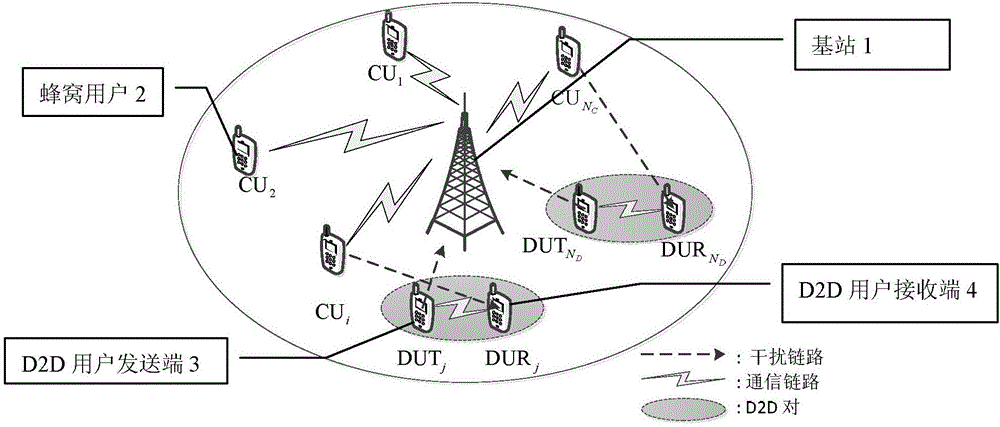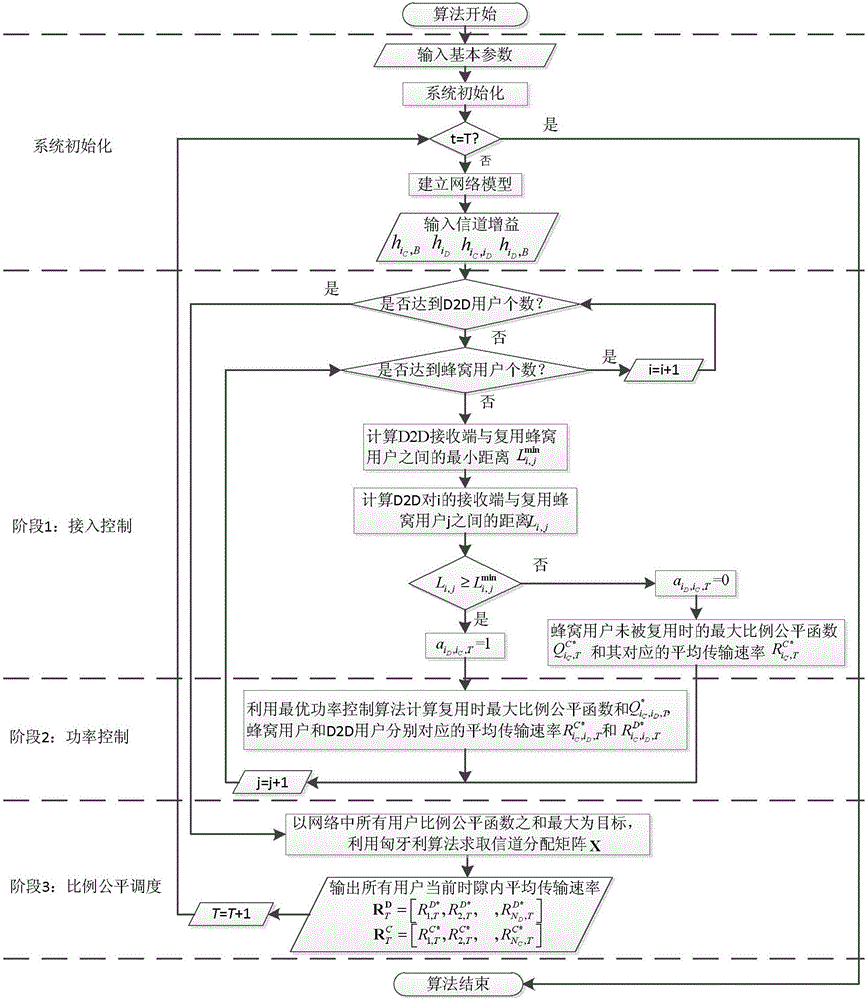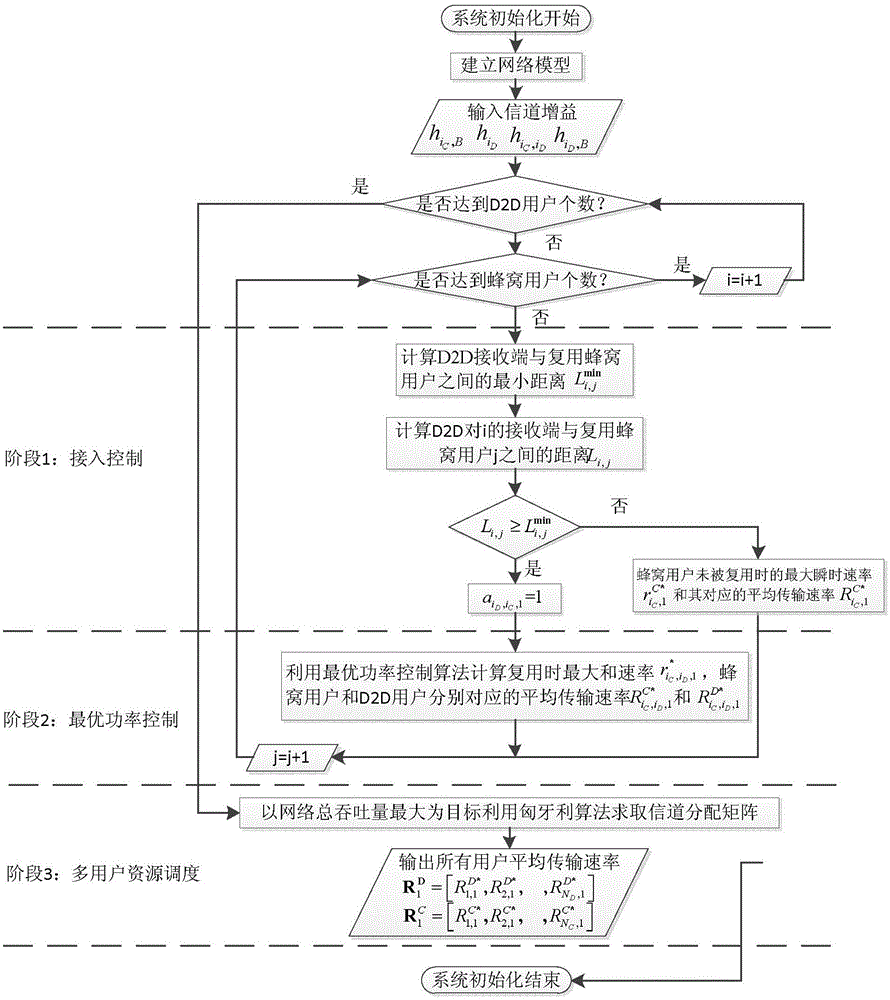D2D and cellular network coexisting heuristic proportional fairness scheduling method
A proportional fair scheduling, cellular network technology, applied in network traffic/resource management, advanced technology, electrical components, etc., can solve the problems of ignoring user fairness and high throughput
- Summary
- Abstract
- Description
- Claims
- Application Information
AI Technical Summary
Problems solved by technology
Method used
Image
Examples
specific Embodiment approach 1
[0047] Specific implementation mode one: combine figure 2 A heuristic proportional fair scheduling method for D2D and cellular network coexistence in this embodiment is specifically prepared according to the following steps:
[0048] Step 1. Calculate cellular user i C Channel gain with base station (BS) Channel gain between D2D pairs cellular user i C with D2D pair i D Interference channel gain between receivers and D2D for i D Channel gain to base station (BS) interfering link Among them, i D is the i-th D2D user; i C is the i-th cellular user;
[0049] Step 2. Assume that the Gaussian white noise of the channel is In the Tth time slot, when user i D Reuse user i C When , calculate the signal-to-interference ratio of the D2D user in the Tth time slot Instantaneous data rate and the proportional fairness function as follows:
[0050] ξ i D , ...
specific Embodiment approach 2
[0089] Specific implementation mode two: the difference between this implementation mode and specific implementation mode one is: the calculation in step one and The specific process is:
[0090] cellular user i C The mathematical expression of the channel gain with the base station (BS) is:
[0091]
[0092] where G is the path loss constant, is the exponentially distributed fast fading from the cellular user to the base station, is the slow fading factor from the cellular user to the base station which obeys the lognormal distribution, α is the path loss factor, is cellular user i C and the distance between the base station; i C is the i-th cellular user; in the mixed network where cellular and D2D users coexist, the instantaneous channel gain of all users is composed of multipath effect, shadow effect and path loss;
[0093] In the same way, the channel gain between D2D pairs is obtained cellular user i C with D2D pair i D Interference channel gain betw...
specific Embodiment approach 3
[0094] Specific embodiment three: the difference between this embodiment and specific embodiment one or two is: in step three, the average transmission rate of user i in the T time slot is expressed as follows:
[0095] R i , T = ( T - 1 ) R i , T - 1 + r i , T T , - - - ( 11 )
[0096] Among them, R i,T-1 Indicates the average transmission rate of the i-th user in the first T-1 time slot, r i,T Indicates ...
PUM
 Login to View More
Login to View More Abstract
Description
Claims
Application Information
 Login to View More
Login to View More - R&D
- Intellectual Property
- Life Sciences
- Materials
- Tech Scout
- Unparalleled Data Quality
- Higher Quality Content
- 60% Fewer Hallucinations
Browse by: Latest US Patents, China's latest patents, Technical Efficacy Thesaurus, Application Domain, Technology Topic, Popular Technical Reports.
© 2025 PatSnap. All rights reserved.Legal|Privacy policy|Modern Slavery Act Transparency Statement|Sitemap|About US| Contact US: help@patsnap.com



